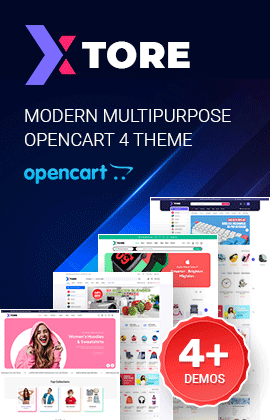|
If you want to install the template exactly like our demo (same data), you should purchase and install the Quickstart Package.
- Important Notes
- 1. Download Template and Extensions
- 2. SJ Blog Responsive Template - Installation and Configuration
- 3. Imperative Plugins - Installation and Configuration
- 4. Other Extensions - Installation and Configuration
Important Notes
Requirement:
- Joomla! 2.5
- K2 component (customized by this template)
- SJ Extensions (see part 3 Core Plugins and 4 Other Extensions)
1. Download Template and Extensions
1.1 Used for members of JTC - Joomla Template Club
STEP 1: Login at SmartAddons.com

STEP 2: Go to Memeber Area -> Download -> Membership

STEP 3: Go to Premium Joomla Templates

STEP 4: SJ Blog Responsive -> Download packages as you want

1.2 Used for single product purchased via e-cart
Receive Donwload-Info email -> Download packages as you want

2. SJ Blog Responsive -Installation and Configuration
2.1 Installation
- Log in Administrator of Joomla! v2.5.x, go to Extensions -> Extension Manager
On this page, click Choose File button, select our template file you have downloaded then click Upload & Install

- Set SJ Blog Responsive as default template

2.2 Configuration
The parameters of SJ Blog Responsive Template are divided into the 6 following groups:- Global Settings
- Layout Settings
- Style Settings
- Top Menu Settings
- Content Component
- Advanced Options
3. Imperative Plugins-Installation and Configuration
You need to install Yt Plugin and SJ Core plugin.Yt Plugin supports Yt Framework for adding extra parameters used with Mega Menu and to compress CSS/JS/HTML when optimizing code.
While SJ Core is used for resizing images in Content Component and other extensions by us.
3.1 Installation
- STEP 1: In Administrator on Joomla! v2.5.x, go to Extensions -> Extension Manager
On this page, click Choose File button, choose those two plugin files then click Upload & Install

- STEP 2:Now, go to Enable SJ Core and Yt Plugin (for Yt Framework) in Extension/Plug-in Manager
3.2 Configuration of YT Plugin (for Yt Framework)
SUPPORT OPTIMIZING CSS/JS/HTML AND STYLING MEGA MENUS

TO YT PLUGIN

SHOWING SJ HELP

4. Other Extensions - Installation and Configuration
After creating data, you can install and configure extensions to have a Website as like as our pre-made demo.4.1 Install
4.1.1 List of extensions used in SJ Blog Responsive demo
You can find a list of modules/plugins/components which are used in SJ Blog Responsive by clicking menu Features -> Extensions of demo Website
4.1.2 Installation
- In Administrator on Joomla! v2.5.x, go to Extensions -> Extension Manager
On this page, click Choose File button, choose an extension file then click Upload & Install

- Install the rest of extensions as above step
4.2 Configuration
After installing extensions which are included in the SJ Blog Responsive template, navigate into Extensions -> Module (or Plug-in) Manager then choose the module or plug-in you want to configure. The following example is choosing a module from Module Manager:

By this screenshot, you will see how module is placed in the default layout:

By this screenshot, you will see how module is placed in the default layout:

4.2.1 Mega Menu - Features
Menu Item Type: Text Separator
4.2.2 Mega Menu - Joomla!
Menu Item Type: Text Separator
4.2.3 Mega Menu - K2
Menu Item Type: K2 - Categories
4.2.4 SJ K2 Slider
Position: slideshow1
Suffix: _blank
Suffix: _blank
4.2.5 Hello... - Custom HTML
Position: slideshow2
Suffix: Not Used
Suffix: Not Used
4.2.6 Custom HTML Modules
There are 3 positions that used Custom HTML modules in the same way: user3, user4 and user5. Here we will configure an example for custom HTML modules. Let take "Olympics 2012", other will be the same.
Position: user3
Suffix: style-bg bg1
Suffix: style-bg bg1
4.2.7 The left Main Menu
There are two positions that used Menu Module, postion7 (first) and user9. Here we will configure an example. Let take the left Main Menu, other will be the same
Position: position7
Suffix: _menu grid-1
Suffix: _menu grid-1
4.2.8 My Photos - SJ Gallery
Position: position7
Suffix: grid-1
Suffix: grid-1
4.2.9 Login Form
Position: position7
Suffix: grid-1
Suffix: grid-1
4.2.10 Who's Online
Position: position7
Suffix: grid-1 clear useronline
Suffix: grid-1 clear useronline
4.2.11 Smart Search
Position: usera
Suffix: Not used
Suffix: Not used
4.2.12 Get connected with us - Custom HTML
Position: userb
Suffix: connect-us
Suffix: connect-us
4.2.13 Most popular - K2 Content
Position: user6
Suffix: clear
Suffix: clear
4.2.14 SJ Twitter
Position: user7
Suffix: yttwitter clear
Suffix: yttwitter clear
4.2.15 SJ Facebook
Position: user8
Suffix: clear
Suffix: clear
4.2.17 Footer
Now there are not modules placed in this position. You can try some ones.
That's homepage. For other advanced and customized configurations, please submit ticket OR purchase our installation services.
































